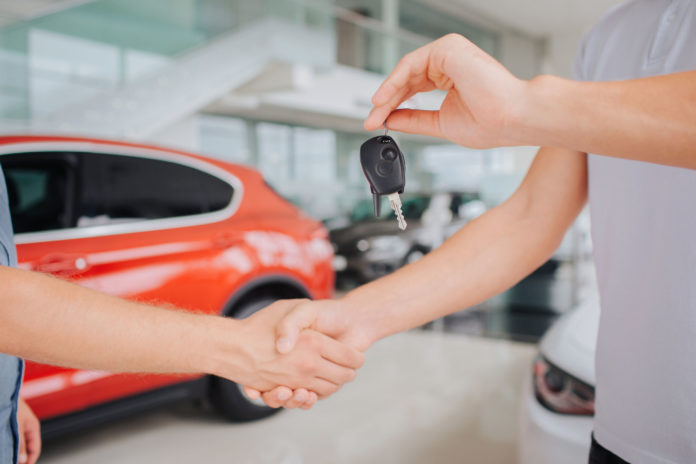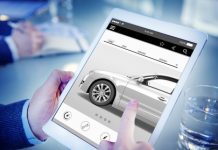
By Desiree Homer
Looking at the year ahead, your dealership is most likely going to make improvements on last year’s lead source strategies. The best game plans are those that are flexible and should help you adapt to the changing car-buying landscape. What changes are you anticipating in your market this year? Let’s take a closer look at the latest trends that other dealerships are leveraging to help you predict your best efforts for growth. Ideally, you can identify the disruptive business model that works best for your market and embrace some of the new engagement tactics with which other dealerships are experiencing success.
How Consumers Browse & Buy
Many dealerships have embraced the digital showroom. As more consumers use their devices to browse inventory and take virtual tours of specific models, the smartest dealerships have adapted. Understanding how car buyers consume information and make buying decisions is critical. The need for remote and digital browsing has become so prominent that a variety of virtual car buying companies have since emerged. In a click-to-cart and doorstep delivery culture, buying the family van means having the same type of options.
There has been an explosion of digital car buying services, as an alternative to the traditional showroom shopping experience. Dealerships throughout the U.S. are branching out to offer delivery test-drive and final vehicle delivery services as part of their process to compete. In doing so, they can close that gap for those consumers who wish to make purchases without ever having set foot on a showroom floor. Of course, adding the delivery of a vehicle in the customer’s driveways implies a few operational changes on the part of the dealership team. Still, overall, it can be a minor change to an existing strategy.
These buying trends don’t necessarily imply that the visit to the dealership is irrelevant. Alternatively, we’re seeing that while consumers want the all-inclusive digital options, they still want to see their intended purchase in person. This means dealerships have an opportunity to engage their buyers, but with a different intention than years past. Instead of meeting people on the lot, to escort them through a car introduction and sales process, people are walking in already sold on their vehicle. They are now looking to the dealership staff to seamlessly walk them through the next steps, add value, and create an effortless experience. Identify the disruptive business model and embrace new engagement tactics.
Zag When Others Are Zigging
When other dealerships are pushing for new and used vehicle sales, you can take a flanker approach to attract new business. Instead of advertising sales and vehicle pricing, reach out to your market with a niche market value that offers an experience.
Some engagement tactics other dealerships are tapping into include:
- Offer a towing safety seminar for the public before boat or RV season at which your experienced staff can demonstrate safety best practices for hook up, hauling, and towing capacities.
- Extend the public service of proper child seat installation to include other self-maintenance tips and best practices for child safety in the car.
- Partner with other businesses within your area that target the same type of customer that you do. Shared community efforts and support can help catapult your dealership (and their business) to best-of status in your market.
One Dealership That Scales Loyalty to a New Level
Mercedes-Benz of Sugar Land, Texas, is a dealership that has anticipated the consumer need for connection, despite the digital, ‘buy from my pajamas’ market and adapted accordingly. As an extension of their current loyalty program, the Mercedes of Sugar Land group has scaled their efforts to include a Teen Driving School, partnerships with area businesses, and embraced authentic relationship-building at every phase of the community engagement level.
The Teen Driving School
Derek Brown, Vice President of Marketing & Business Development, shared the ideas behind the successful Teen Driving School. An idea that had been casually discussed around the office for a few years, finally came to fruition in July of 2014 when management decided to put together an event. Ideally, it was created to provide the dealership’s clients with teen driving, safety resources. Over a dozen students attended that first event, and its popularity has exploded since. Last December, they opened the exclusive driving school to area high school students, secured a professional race car driver as a brand ambassador who matched the dealership’s contribution of $5,000 in order to offer a complimentary class for Clements High School students. The success story here is not only teens walking away with knowledge about extreme driving conditions safe practices, but also a dealership brand that has managed to create a positive and engaging community channel.
Engaging Beyond the Sale
Dealerships are creating subsequent engagements beyond the sale in other ways too. In doing so, they’re maintaining a healthy funnel of communications to keep the generational buyers coming back, and inspiring new introductions through referrals.
Some automotive experts say retaining existing customers can translate to 75% closing rates for future sales. Crafting a thorough strategy for 30-60-90 day follow-ups can improve your dealership’s retention. Derek Brown discusses some of the engagement efforts that work well for their dealership in Sugar Land. They have successfully evolved their loyalty program, both organically and intentionally. “We had partnerships in place throughout the community,” he says. What began with their Teen Driving Safety School, has grown to include cross-promotional relationships with similar lifestyle brands like cycling studios, upscale dining, and jewelry partners. They have evolved their brand of exclusivity beyond their showroom. They are a car dealership committed to offering superior experiences inside and outside their doors.
Making Sure Your Customers Understand Their New Technology
Every year, automakers introduce new suites of driver assistance technology tools as well as connectivity and infotainment enhancements. While the tech-savvy buyers might not need full-fledged tutorials for use, you may be surprised to learn just how many consumers aren’t using their vehicle’s tech but could be. Based on market research from 2015, over 20% of drivers admitted they had never used more than half of the tech features in their vehicles. Another stat that might help with perspective is based on an Autotrader Tech Impact study from 2017. This study suggests 61% of consumers surveyed said they’d rather have the technology options instead of a specific vehicle color. It also indicates 64% would pay more for some or all of their selected tech-based features. Now consider when customers buy their vehicles via one of the all-digital car buying services. Who do they reach out to with questions about their vehicle? Your dealership has a unique opportunity to engage these and other consumers after the sale.
Using the Tools Available to Your Dealership
As a dealership, you may have an opportunity to promote the safety and driver assistance features that are available on your inventory, to educate your car buying population. The National Automobile Dealers Association (NADA) launched A Dealer Guide to High-Tech Vehicle Safety, a publication designed to assist sales teams in introducing customers how to leverage the benefits of their vehicles’ safety tech properly.
Apple CarPlay/Android Auto connections, setting up the Ford MyKey or Chevy Co-Pilot360 for secondary driver supervision, can be meaningful connection points after the sale. Even if they didn’t buy from you, you have an opportunity to connect with consumers in a valuable way by offering to assist them in maximizing the benefits of their vehicle’s tech. According to Derek Brown, connecting customers to their new vehicles goes beyond a basic tutorial.
“One of our specialists spends anywhere from forty-five minutes to an hour, contingent on customer needs and vehicle type, reviewing the technology, connecting devices and assuring they know how to comfortably operate the available tools in their Mercedes-Benz. Additionally, we follow up via phone and email to resolve any lingering questions, often making off-site visits or assisting remotely.”
Don’t Sell Them a New Car. Instead, Offer Them Valuable Options
The digital car buying companies promote a few key solutions to customers’ buying process problems. They offer a digital platform that allows browsers to find a vehicle they like, apply for financing, get a trade-in value, and schedule delivery. It’s hassle-free and often accompanied by money-back guarantees. But, it doesn’t mean the dealership shopping days are gone.
“For the most part, we see the consumer researching online but still yearning for that in-store experience,” says Brown. He goes on to say the digital tools have only accelerated the process, not necessarily replaced the need for an engagement opportunity. In fact, for their dealership, they view each sale as a “monumental moment” to “celebrate their purchase.” Sure, buyers are eager to bypass the old school days of haggling and mountains of paperwork to sign. They are still, however, interested in celebrating their purchasing decision.
Ultimately, selling more cars means meeting your customers where they want to be met in the process. Consider structuring your process so that your dealership can continue to be needed, provide value, and offer a menu of options that creates the best digital and showroom interactions.












